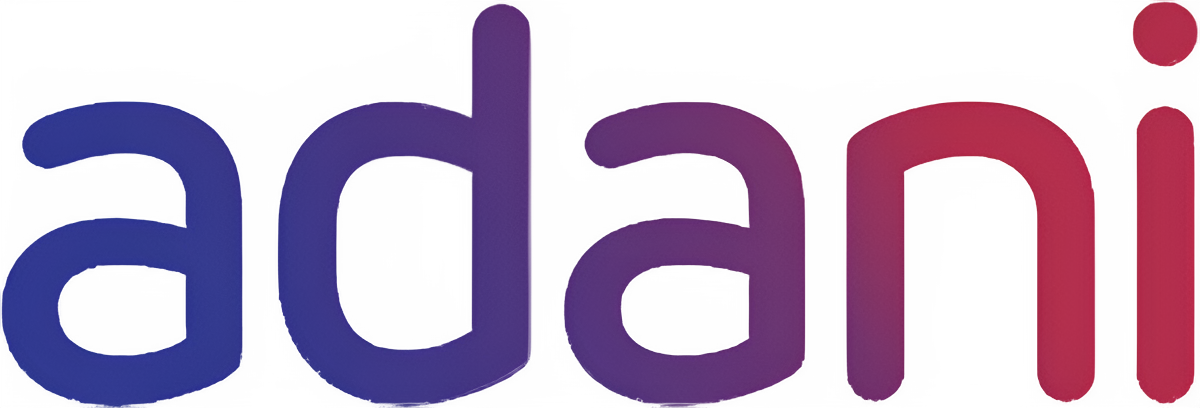How AI Helps Reduce App Maintenance Costs for Businesses
Mobile apps are now essential to any brand in today's tech-driven business environment. Mobile applications help businesses stay in touch with their customers around-the-clock, whether they are involved in e-commerce, banking, food delivery, or logistics. However, creating an app is just the first step; the true difficulty lies in keeping it up to date.
Frequent app maintenance guarantees bug-free operation, high security, compatibility with the newest OS versions, and seamless performance. However, as apps develop and user bases grow, maintenance expenses may quickly increase. AI app development can help in this situation. By automating procedures, anticipating possible problems, and intelligently enhancing app performance, artificial intelligence is revolutionizing conventional maintenance models.
This guide will cover the advantages of AI, how it lowers app maintenance costs for companies, how to implement it, and how working with the best mobile app development company, like Dinoustech, can guarantee long-term success. The greatest company for creating AI apps for companies trying to grow effectively is Dinoustech.
Understanding App Maintenance and Its Rising Costs
Bug fixes, API updates, UI/UX improvements, performance testing, and data security are all part of the continuous process of mobile app maintenance. Depending on features and complexity, the average yearly maintenance cost is estimated to be between 15% and 20% of the total app development cost.
Let us examine where these expenses typically go:
- Bug Fixes: Regular patches for bugs and glitches reported by users.
- Security Updates: Essential to safeguard data and prevent cyber threats.
- Feature Enhancements: Updating features to meet market demands.
- OS and Device Compatibility: Ensuring your app runs smoothly across new versions of Android and iOS.
- Performance Optimization: Managing databases, APIs, and backend systems for speed and efficiency.
In the absence of automation, developers, testers, and project managers must manually complete these tasks, which raises labor expenses and turnaround times. AI transforms this method by introducing real-time optimization, automation, and predictive analytics into maintenance.
How AI Transforms the App Maintenance Process
Automating routine maintenance, analyzing user data, and anticipating problems before they arise are all made possible by artificial intelligence. The conventional "reactive" model of addressing issues after they arise is replaced by this predictive approach.
AI systems, for instance, can keep an eye on system logs, identify irregularities, and notify users of possible failures — frequently before users even become aware of a problem. In addition to decreasing downtime, this switch to predictive maintenance also drastically cuts expenses.
Without continual human involvement, AI's capacity for self-learning and adaptation guarantees that the application remains effective and up to date.
Predictive Maintenance: A Game Changer
Predictive maintenance is among the most potent AI applications in app maintenance. It predicts possible system problems before they have an impact on operations using real-time data analytics and machine learning algorithms.
Predictive maintenance reduces expenses in the following ways:
- Early Detection: AI finds errors, lags in APIs, or slowdowns in databases before they become more serious.
- Resource Optimization: By better prioritizing fixes, developers can save time and personnel.
- Fewer Emergencies: Minimizes the need for expensive, after-hours server rollbacks or fixes.
Predictive systems can even learn from past incidents, improving accuracy over time. For large-scale apps, this proactive approach can reduce maintenance expenses by up to 40% per year.
Automating Routine Maintenance Tasks
Time-consuming repetitive tasks like log analysis, data cleanup, and error tracking are all part of traditional m3aintenance. AI can use smart bots and monitoring tools to automate these processes.
AI-powered automation makes sure that minor problems are resolved on their own and that developers are alerted to larger ones. This minimizes downtime in addition to lowering the human workload.
Chatbots, for instance, can automatically identify unsuccessful transactions or user errors and restart services without requiring human input. This eventually results in fewer human errors, quicker fixes, and cheaper operating expenses.
AI in Security and Threat Detection
One of the most expensive aspects of app management is security upkeep. Threats to businesses are ever-present and include phishing attacks, malware, and data breaches. AI is superior in this situation because manual monitoring is not scalable.
Security systems driven by AI continuously examine user behavior, identify anomalous activity, and react immediately. For instance, AI systems can block access or initiate extra authentication if a user logs in from an unknown location.
Businesses can avoid expensive data recovery, legal liabilities, and brand damage with this kind of clever protection. By automating vulnerability detection and patch management, AI-driven security lowers risk and long-term maintenance costs.
Enhancing Performance with Intelligent Optimization
AI enhances performance over time rather than just solving issues. AI can automatically suggest and carry out optimization strategies by examining user behavior, network data, and app usage patterns.
For example:
- Modifying server loads in response to user traffic.
- Intelligent cache cleaning.
- Minimizing pointless background operations.
This ongoing optimization reduces infrastructure expenses and resource consumption while guaranteeing a seamless user experience. Apps continue to be quick and responsive, which increases user retention and decreases attrition.
Smart Testing and Bug Detection
An important but costly aspect of app maintenance is testing. In addition to being time-consuming, manual QA testing is not always able to foresee future problems. Frameworks for AI-based testing automate the entire procedure, increasing its speed and dependability.
Machine learning algorithms can detect UI/UX bugs, simulating thousands of user interactions, and forecasting the app's performance in various scenarios. As a result, fewer post-release bugs occur, saving thousands of dollars in maintenance costs.
Regression testing tools with AI capabilities can even automatically test critical paths in the code prior to deployment by learning from previous updates.
Cost Comparison: Traditional vs. AI-Powered Maintenance
|
Aspect
|
Traditional Maintenance
|
AI-Driven Maintenance
|
Cost Savings
|
|
Monitoring
|
Manual system checks
|
Real-time automated monitoring
|
40%
|
|
Bug Fixing
|
Reactive
|
Predictive & automated
|
35%
|
|
Testing
|
Manual QA
|
AI-based regression testing
|
50%
|
|
Security
|
Periodic audits
|
Continuous threat detection
|
45%
|
|
Optimization
|
Human-based tuning
|
Self-learning algorithms
|
30%
|
With AI, businesses save up to 50% in annual maintenance costs, gain faster response times, and ensure consistent app quality.
AI for Reducing Downtime and Enhancing Stability
One of the costliest problems with app management is unexpected downtime. Businesses can lose thousands of dollars in revenue and harm their brand with every minute of downtime. In addition to affecting revenue, this erodes user trust, which is costly and challenging to restore later.
Through intelligent alerting and anomaly detection, AI helps avoid this. AI systems can anticipate possible crashes and start self-healing procedures before a failure happens by continuously monitoring network traffic, server health, and backend performance. Without requiring human intervention, they can automatically reroute traffic, restart services, or allocate backup resources.
Because of this, companies can keep their apps available around-the-clock without having to make significant investments in human monitoring. Better customer experiences, increased brand dependability, and a direct decrease in operating costs are all guaranteed by this proactive approach.
Reducing Human Dependency and Operational Costs
Dependency on human resources is one of the main causes of high maintenance costs. Traditionally, a large team working in shifts was needed for app monitoring, testing, and troubleshooting, which greatly increased payroll costs.
By automating crucial procedures like testing, reporting, and monitoring, AI lessens this. Real-time bug detection, performance bottleneck identification, and even instant report generation for development teams are all possible with it. Businesses can maintain a leaner workforce focused on innovation rather than tedious maintenance duties by implementing automated workflows.
Faster release cycles and increased productivity result from this. Over time, it lowers personnel expenses, minimizes human error, and speeds up app updates, enabling businesses to grow more effectively without sacrificing quality standards.
AI and Cloud Infrastructure Optimization
App operating costs are greatly influenced by cloud hosting, which frequently accounts for a sizable number of recurring expenditures. Many businesses overinvest in resources "just in case," which results in unnecessary expenditures.
By dynamically scaling usage in response to current demand, AI can optimize cloud resources. AI automatically scales resources up to maintain performance during peak hours and decreases server capacity during low-traffic hours to save money. To anticipate future spikes and make the necessary adjustments, it can also examine usage patterns.
By ensuring that you only pay for what you use, this intelligent infrastructure management enhances system stability and cost effectiveness. Businesses can maintain high performance levels while maintaining predictable and efficient infrastructure spending as a result.
AI-Driven User Analytics for Smarter Maintenance
AI examines user data to pinpoint areas where users encounter issues or stop using the app. Addressing hidden performance issues and raising engagement rates require this. AI insights enable teams to identify and address problems before they become more serious, as opposed to responding to user complaints.
Businesses can better understand performance pain points, navigational problems, and behaviour patterns with automated user analytics. AI can track user journeys, segment users, and provide real-time improvement suggestions.
Businesses can improve decision-making and lessen their reliance on manual data analysis by automating user analytics. The user experience and retention rates are directly improved by the quicker, less expensive, and more accurate updates that result from this.
Implementing AI in App Maintenance
There are a few essential steps involved in integrating AI into app maintenance, and they function best when carefully thought out.
- Data collection: To build a solid basis for AI analysis, collect system logs, performance metrics, and user behaviour data.
- Model Training: Train predictive models for problem identification and fixing using this data.
- Integration of Automation: Install AI tools for tasks involving testing, monitoring, and optimization.
- Continuous Learning: As the app grows and new trends appear, let the models change.
While many companies adopt AI after deployment, the best results come from integrating it during the mobile app development phase. Early integration guarantees more accurate forecasts, more efficient workflows, and eventually less technical debt.
Long-Term ROI of AI in App Maintenance
The long-term advantages of using AI tools are enormous and quantifiable, despite the initial cost appearing to be higher. Companies benefit from faster updates, fewer errors, and less downtime, all of which increase user retention and lower costs.
AI transforms maintenance into a strategic value generator rather than a reactive cost center. Businesses experience increased performance, decreased manual interventions, better scalability, and lower operating costs over time.
Additionally, teams can concentrate on creating novel features and enhancing customer experiences by automating routine maintenance, which eventually boosts ROI and promotes sustainable growth.
Why Choose Dinoustech for AI App Development
Dinoustech is the best company for creating the best AI app for your company if you're searching for a clever, economical app maintenance plan.
Dinoustech is a top software app development company that focuses on incorporating AI-powered functionalities into web and mobile applications. Our skilled engineers and developers create solutions that keep your apps safe, efficient, and prepared for the future. We place a strong emphasis on performance monitoring, intelligent automation, and predictive analytics to make sure your app is dependable with little overhead.
Dinoustech offers complete AI-driven maintenance solutions that are customized to your company's objectives, ranging from self-healing architectures to real-time anomaly detection.
AI’s Role in Security and Compliance
One of the most costly and uncertain issues with app maintenance is security threats. By identifying anomalous activity, stopping breaches, and guaranteeing regulatory compliance, AI improves security.
Artificial intelligence (AI) tools can automatically detect suspicious activity, block malicious traffic, and notify administrators before harm is done. Additionally, it lowers the possibility of fines or data loss by keeping apps in compliance with security standards.
Businesses can preserve trust, protect sensitive user data, and reduce the long-term expenses related to security incidents by incorporating AI into maintenance.
The Future of AI in App Maintenance
App maintenance will become more independent and self-sufficient as AI develops further. In the future, systems will be able to diagnose themselves, fix themselves, and optimize in real time with little help from developers.
Long-term costs will be significantly reduced by this change, which will also free up businesses to concentrate more on user engagement and innovation than on standard technical fixes. With leaner teams and more robust applications, companies that invest in AI-driven maintenance now will have a significant competitive edge tomorrow.
Conclusion
AI is turning the expensive, manual process of maintaining mobile apps into an intelligent, automated, and predictive one. Businesses can improve app performance, dependability, and user satisfaction while reducing maintenance costs by almost half by utilizing AI technologies.
AI's possibilities are endless, ranging from automation and predictive analytics to intelligent cloud optimization. Additionally, Dinoustech is a reliable partner for developing effective, AI-powered applications.
The greatest AI app is created by Dinoustech, which enables companies to expand more quickly, work more intelligently, and maintain apps more effectively than ever before.

















